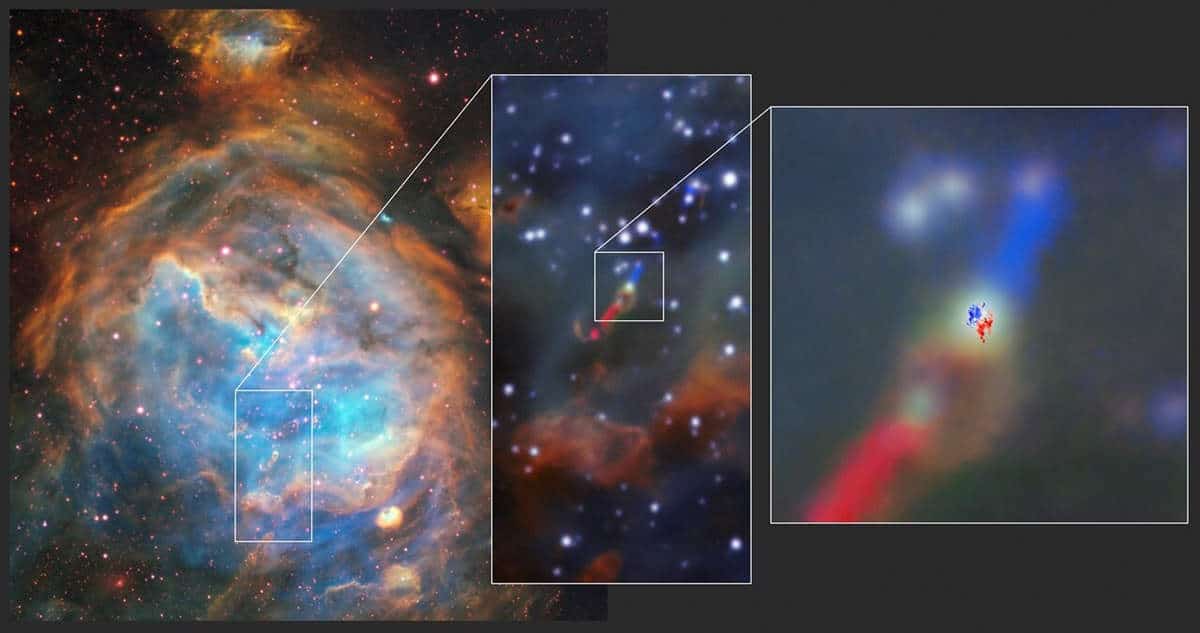Astronomers peering into the nearby galaxy known as the Large Magellanic Cloud have spotted something that has never been seen outside our own Milky Way galaxy.

They found a disc around a young star.

The disc is identical to those which, over millions of years, form planets within our galaxy. As the massive young star grows, it accretes matter from its surroundings through gravity to form a rotating disc.
Clumps formed within such accretion discs are believed to be the seeds of future planets.
The discovery is detailed in a paper published in Nature.
Detection of the intergalactic proto-planetary disc was made using the Atacama Large Millimeter/submillimeter Array (ALMA) in Chile. It followed observations with the Multi Unit Spectroscopic Explorer (MUSE) instrument on ESO’s Very Large Telescope (VLT), which spotted a jet from a forming star deep inside a gas cloud in the Large Magellanic Cloud.
The star system was named HH 1177.
“When I first saw evidence for a rotating structure in the ALMA data, I could not believe that we had detected the first extragalactic accretion disc, it was a special moment,” says lead author Associate Professor Anna McLeod from Durham University, UK. “We know discs are vital to forming stars and planets in our galaxy, and here, for the first time, we’re seeing direct evidence for this in another galaxy.”

Astronomers were able to determine that the matter around the star was rotating by analysing the wavelength of light coming from the disc.
“The frequency of light changes depending on how fast the gas emitting the light is moving towards or away from us,” explains co-author Jonathan Henshaw, a research fellow at the UK’s Liverpool John Moores University. “This is precisely the same phenomenon that occurs when the pitch of an ambulance siren changes as it passes you and the frequency of the sound goes from higher to lower.”
If the disc is rotating faster closer to the star, this is the “smoking gun” that shows astronomers an accretion disc is present.

Massive stars like HH 1177 form much more quickly and live far shorter lives than medium-sized stars like our sun. In the Milky Way, they are hard to observe because they are obscured by the dusty material from which they form.
But, in the Large Magellanic Cloud, the new stars are born in a different kind of material. Lower dust content means HH 1177 is no longer cloaked by the material from which it was born.
The Large Magellanic Cloud is 160,000 light years away and is about 14,000 light-years across. It is home to about 30 billion stars (compared to the hundreds of billions in our own galaxy). The nearby galaxy is the second or third closest to the Milky Way and is one of several “satellite” galaxies that float in a long, slow orbit around our galaxy.
“We are in an era of rapid technological advancement when it comes to astronomical facilities,” McLeod says. “Being able to study how stars form at such incredible distances and in a different galaxy is very exciting.”

Cosmos is a not-for-profit science newsroom that provides free access to thousands of stories, podcasts and videos every year. Help us keep it that way. Support our work today.
